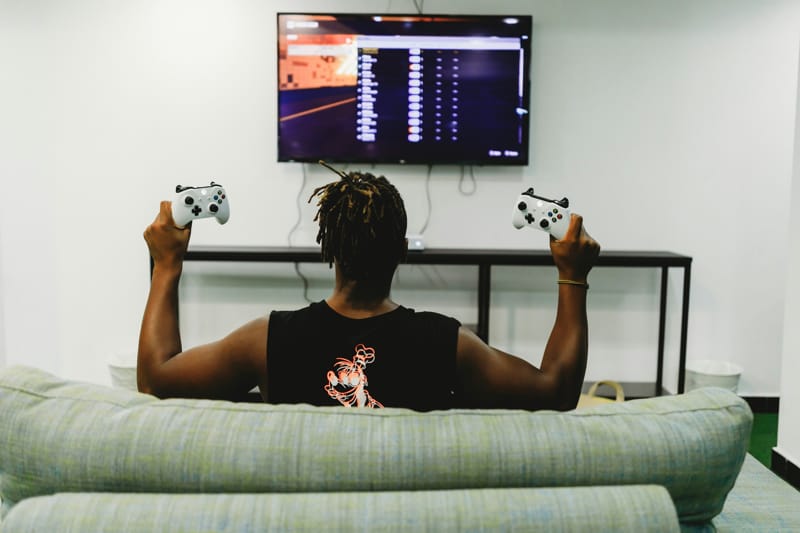The flow state—where focus is intense and gameplay feels effortless—is a powerful advantage in competitive gaming. Achieving this “in the zone” mindset requires a balance of challenge, skill, and preparation. From mental training and physical routines to environmental design and nutrition, this article breaks down how gamers can deliberately trigger flow to enhance reaction speed, concentration, and in-game decision-making.
What Is the Flow State and Why It Matters for Gamers
In gaming, the flow state is a psychological sweet spot where attention, immersion, and skill align perfectly. Often described as “being in the zone,” flow brings a sense of control, faster reflexes, and heightened awareness—essential for high-stakes gameplay.
Players in flow perform at their best, often reporting that time slows down and decisions feel automatic. It’s not just a nice feeling—it’s a measurable boost to cognitive and physical coordination, especially in fast-paced games.
According to research in Frontiers in Psychology, flow improves reaction time, creativity, and problem-solving under pressure—qualities that define elite-level play (source: Frontiers). Mastering this state can give gamers a distinct edge in both ranked and tournament settings.
The Skill-Challenge Balance: Flow’s Core Trigger
One of the most important ingredients of flow is the perfect balance between difficulty and ability. If a game is too easy, players get bored. If it’s too hard, they feel anxious. Flow occurs when the challenge pushes you slightly beyond your current comfort zone—engaging enough to demand your full attention, but not so difficult that it becomes overwhelming.
This is why competitive matches, especially ranked or tournament scenarios, are more likely to produce flow than casual or unranked play. These matches introduce consequences, pressure, and skill-testing moments—all of which stimulate the brain’s reward and focus systems.
Mental Priming for Flow: Breath, Focus, and Visualization
Gamers can train their minds to enter flow more easily using mental priming techniques:
- Meditation calms racing thoughts and increases present-moment awareness.
- Breathwork lowers physiological stress and improves clarity under pressure.
- Visualization sharpens intention and primes the mind for expected challenges.
These practices help eliminate distractions and improve attention control, making it easier to drop into flow when gameplay begins. Even just five minutes of focused breathing before a match can reset the nervous system and support deeper focus.
Physical Preparation and Neurochemistry
Flow isn’t purely mental—it’s also biochemical. Neurochemicals like dopamine, norepinephrine, and endorphins surge during flow states, enhancing alertness and motivation.
To support this process, gamers can build pre-session routines that include:
- Light physical activity (stretching, walking) to elevate heart rate and stimulate neurotransmitters.
- Exposure to sunlight to regulate circadian rhythms and boost dopamine.
- Flow-supportive nutrition, such as:
- Protein-rich snacks for dopamine synthesis
- Dark chocolate for phenylethylamine and flavonoids, which support cognitive performance
These habits prime the brain’s chemistry to make flow more accessible, especially during intense matches.
Source: Mindframe Performance
Designing Your Environment for Immersion
Flow is easier to reach in the right setting. Gamers can build flow-friendly setups that minimize distractions and reinforce focus:
- Noise-canceling headphones to block external interruptions
- Low lighting or colored LED setups to reduce eye fatigue and enhance atmosphere
- Music or ambient sounds chosen for rhythm and concentration
- Clean workspace to remove clutter and visual noise
- Defined goals for each session to maintain purpose and direction
These environmental cues signal the brain that it’s time to enter a performance mindset, accelerating the path to flow.
Setting Clear Goals and Immediate Feedback
To sustain flow during play, gamers need clear, actionable objectives and real-time feedback. These create a feedback loop that keeps the brain engaged and motivated.
Whether it’s improving accuracy by 5%, reaching a certain rank, or surviving longer in a BR round, having measurable progress indicators keeps attention locked in and discourages multitasking.
Games that naturally offer immediate consequences and dynamic pacing—like tactical shooters, MOBAs, or battle royales—often create the perfect conditions for ongoing flow.
Final Thoughts: Flow Is a Trainable Superpower
Flow isn’t just a lucky accident—it’s a trainable cognitive state. By understanding the psychological and physical foundations that support it, gamers can intentionally shape routines that lead to more frequent flow experiences.
Through mental rehearsal, physical preparation, and strategic game environments, players can unlock peak performance on demand. Whether you’re climbing the ladder, competing in esports, or simply looking to get the most from your time in-game, flow is the gateway to your best play.
Citations
- Csikszentmihalyi, Mihaly. “Flow: The Psychology of Optimal Experience.” Harper & Row, 1990.
- Peifer, Corinna, et al. “The Relation of Flow-Experience and Physiological Arousal under Stress—Can You Relax and Yet Perform?” Frontiers in Psychology, vol. 5, 2014. https://www.frontiersin.org/articles/10.3389/fpsyg.2014.01219/full
- Mindframe Performance. “What Is Flow and How to Access It?” MindframePerformance.com, https://mindframeperformance.com/flow/


